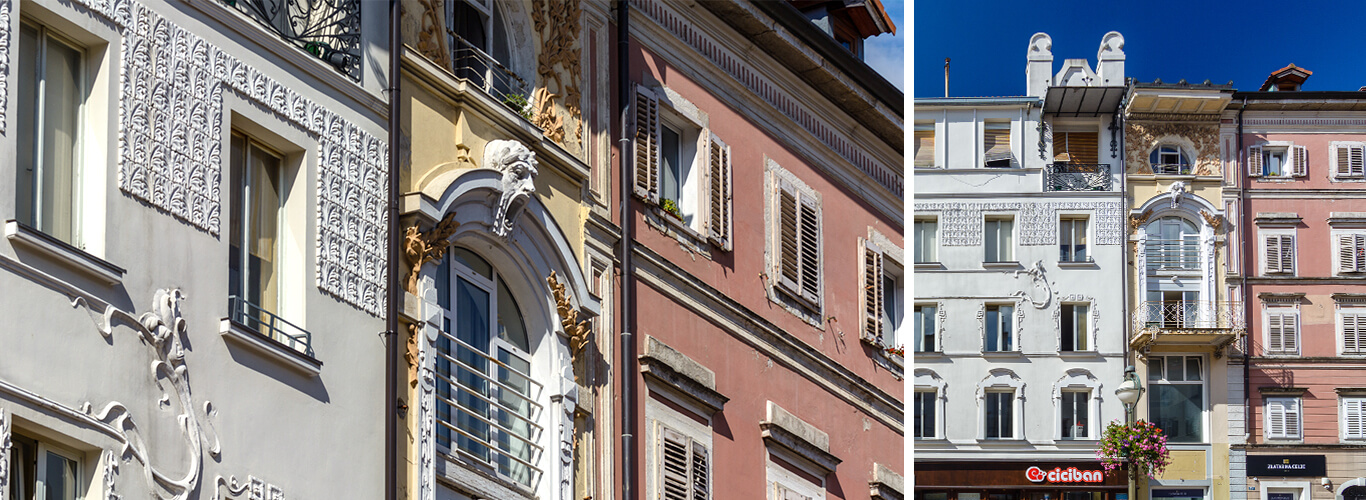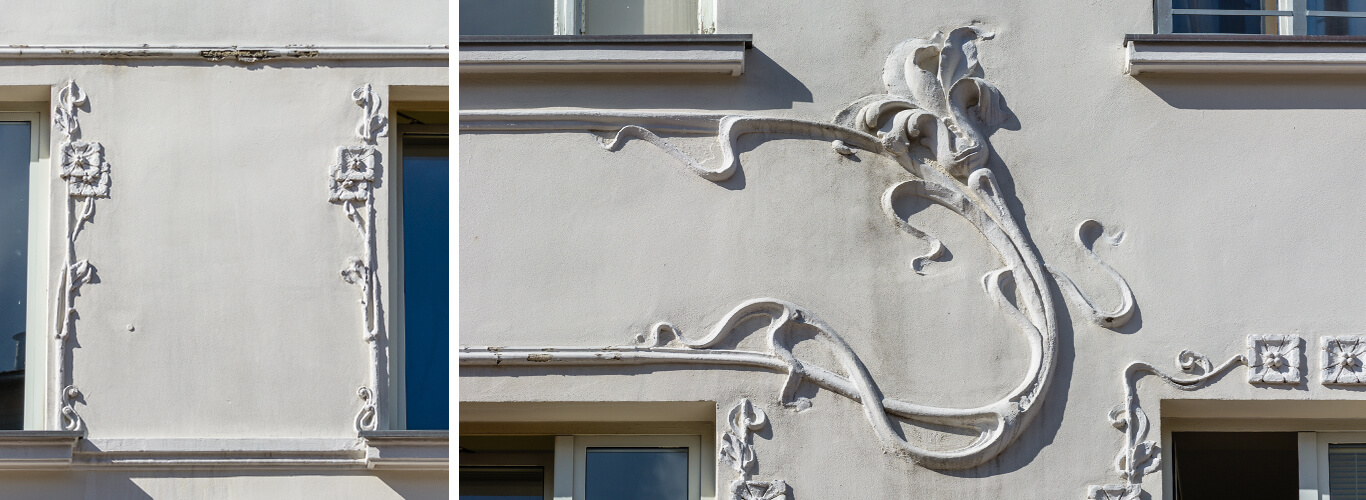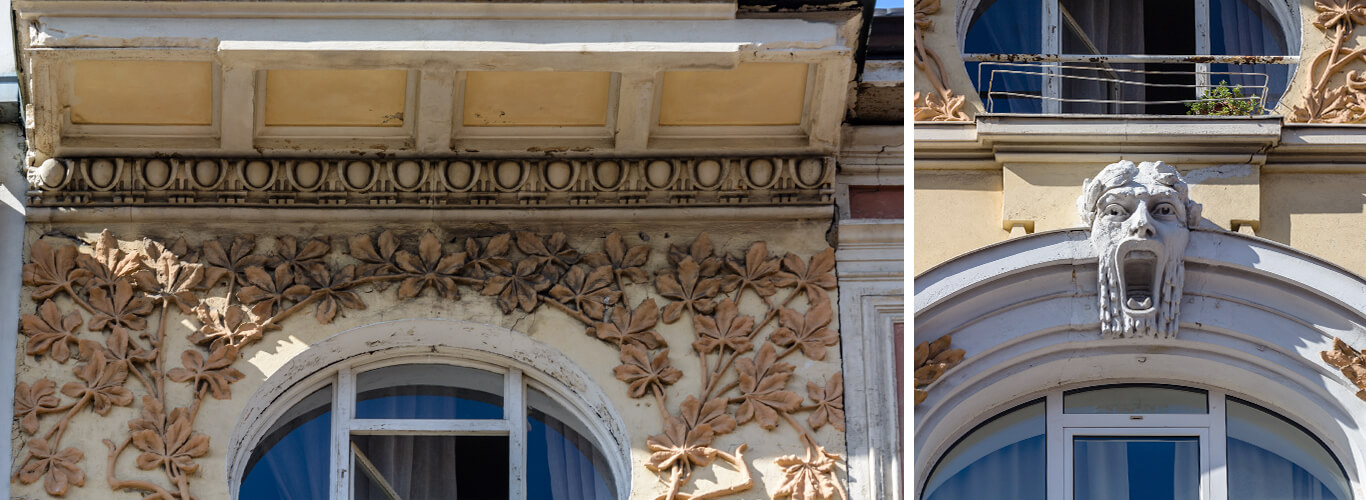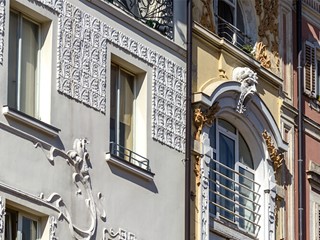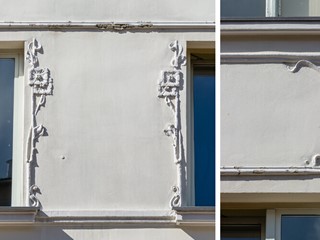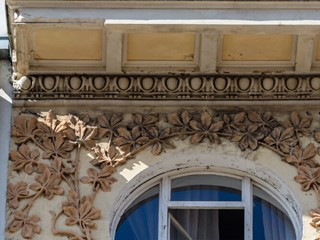Schittar House
address: Korzo 23Period: Secession/Art Noveau
Kind: Immovable material heritage
Century: 20
Year: 1904
Purpose: residental bussines
The Schittar House was built in 1904 according to the project by Emilio Ambrosini, a famous architect who worked in Rijeka since 1884.
Since its beginning, the house was intended for residential and business purposes, which marked it in a particular way. A photographic studio was situated in the attic so the entire floor was furnished with windows towards the north side, overlooking Korzo, with a balcony along its entire length. Unfortunately, after its conversion into a residential space in 1937, these features were lost. The balcony was broken into two smaller ones, one on each side of the building, but the cast iron rail was kept.
The building is distinguished by excellent Art Nouveau decoration, from the horizontal frieze with leaf-like motifs, iris relief in the central part of the balcony and wrought iron rail. Swirls, floreal motifs and decorative pylons provide the building with elegance characteristic for Art Nouveau.
Originally, the façade had a sign Studio artistic-fotografico, which was later removed, but the wooden shop-window on the ground floor was kept. The Schittar House is distinguished as one of the capital works in Art Nouveau style in Rijeka.
Valorization:
The building is protected as a part of the zone Centre-Old Town.
Bibliography:
Filčić, Renata. Usporedba zagrebačke i riječke stambene arhitekture secesije. BA thesis – Faculty of Humanities and Social Scineces in Rijeka. 2013.
Glavočić, Daina (ed.) Arhitektura secesije u Rijeci, Museum of Modern and Contemporary Art, Rijeka, 2007.
Glavočić, Daina, Lozzi Barković, Julija and Rotim Malvić, Jasna. SECESIJSKA ARHITEKTURA - vodič kroz Rijeku. Association of Art Historians of Rijeka, Istria and the Croatian Littoral, 2011.
Lozzi Barković, Julija, Secesija u arhitekturi Rijeke. Publishing Centre Rijeka. 2010.
Lozzi Barković, Julija. Arhitektura secesije u Rijeci, Hrvatskom primorju i Istri, in Galić, Anđelka and Gašparović, Miroslav "Secesija u Hrvatskoj". Museum of Arts and Crafts; Zagreb. 2004.
Lozzi Barković, Julija. Genius loci riječkog secesijskog graditeljstva na primjerima značajnijih stambeno-najamnih zgrada. Vjesnik Državnog arhiva u Rijeci (periodical); 39, 241-283, 1997.
Lozzi Barković, Julija. Natura, creatività e produzione nell'architettura Art Nouveau di Rijeka. on-line: www.artnouveau-net.eu: Historical Labs Proceedings.; 2012.
Lozzi Barković, Julija. Pročelna ornamentika secesijskog graditeljstva u Rijeci. Sveti Vid, Proceedings; 131-146, 1997.
Lozzi Barković, Julija. Secesija u graditeljstvu Rijeke/ La secessione nell'edilizia fiumana. Rijeka u stoljeću velikih promjena/ Fiume nel secolo dei grandi mutamenti; 104-108, 2000.
Lozzi Barković, Julija. Secesija u stambenom graditeljstvu Rijeke. Sveti Vid, Proceedings; 163-177, 1995.
Moser, Sara. Arhitektura secesije u Hrvatskoj (Split, Rijeka, Zagreb, Osijek). BA thesis – Faculty of Humanities and Social Sciences in Rijeka. 2012.
Pustišek, Deborah, Emilio Ambrosini, City Museum of Rijeka, 2011.
Pustišek, Deborah. Emilio Ambrosini. MA thesis – Faculty of Humanities and Social Sciences in Rijeka. 2010.
Lozzi Barković, Julija: Secesija u graditeljstvu Rijeke, in Sciucca, Melita (ed.): Rijeka u stoljeću velikih promjena (Proceedings), Edit. Rijeka, 2001. pp. 104 – 108.

